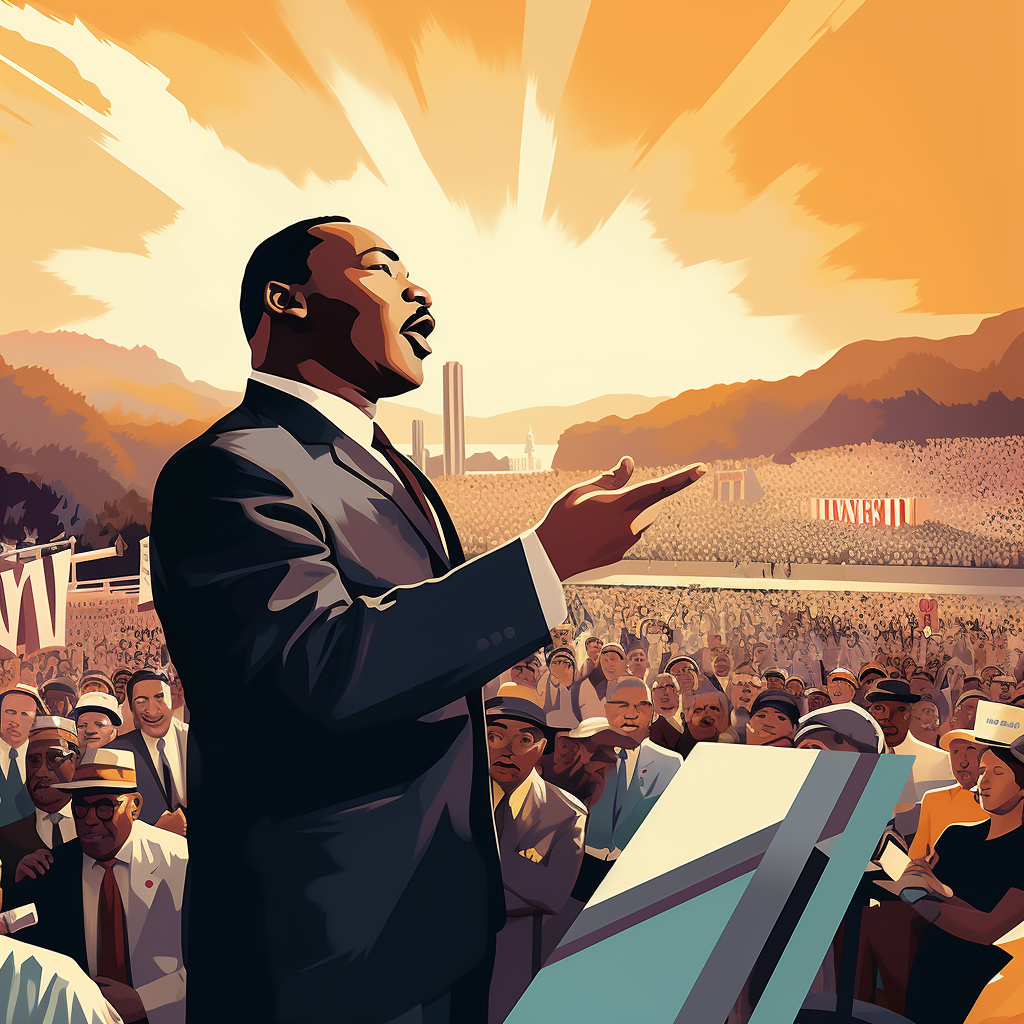Martin Luther King Jr: Impact and Legacy of "I have a dream" in Leadership Communications

Martin Luther King Jr.'s "I Have a Dream" speech, delivered during the March on Washington in 1963, is one of the most iconic and impactful addresses in American history.
This speech exemplifies visionary communication, blending profound oratory skills with a powerful vision for racial equality and justice. King's eloquence and impassioned delivery captured the aspirations of millions, making a lasting imprint on the civil rights movement and the global struggle for equality.
Factual Details of King’s “I Have a Dream” Speech
Date: August 28, 1963
Location: Lincoln Memorial, Washington D.C., USA
Event: March on Washington for Jobs and Freedom
Delivered to over 250,000 civil rights supporters, King's "I Have a Dream" speech was a defining moment in the Civil Rights Movement. In his address, he spoke of his vision for a future where people would be judged not by the color of their skin but by the content of their character.
The speech was not only a call for an end to racism but also a poignant demand for economic and social justice. Its poetic and resonant rhetoric, including references to American ideals and the emotive refrain of "I have a dream," significantly influenced public opinion and cemented King's status as a leading figure in the fight for civil rights.
Key Outcomes:
- The speech galvanized support for civil rights across the nation and the world.
- King’s vision articulated in the speech became a rallying cry for equality and justice.
- The speech helped to shift public opinion and was a catalyst for subsequent civil rights legislation.
Leadership Lessons from King’s “I Have a Dream” Speech
Articulating a Vision for Change:
- King’s ability to vividly articulate a vision for a better future was a key factor in mobilizing support for the civil rights movement.
Emotive and Resonant Communication:
- The speech demonstrated how emotive and resonant communication can deeply connect with an audience and inspire action.
Using Symbolism and References:
- King’s use of American ideals and historical references added depth and universal appeal to his message.
Influencing Public Opinion:
- The speech showcased the power of public speaking in shaping and influencing public opinion and policy.
Legacy of Inspirational Leadership:
- King's "I Have a Dream" speech remains a testament to the enduring power of inspirational leadership and visionary communication.
How Today's Leaders Can Use This Lesson
- Embrace the power of visionary communication to inspire and mobilize others toward positive change.
- Use emotive and impactful language to connect deeply with your audience and convey your message.
- Incorporate symbolism and references that resonate with your audience to add depth and broader appeal to your communication.
- Recognize the role of public speaking in shaping opinions and driving social and political change.
- Strive to leave a legacy of inspirational leadership that echoes beyond your immediate impact.
Concluding Thoughts
Martin Luther King Jr.'s "I Have a Dream" speech remains a shining example of how visionary communication can galvanize a movement and leave an indelible mark on history. His words continue to inspire and challenge leaders to articulate and pursue a vision of a more equitable and just world.
Your Reflection
- Reflect on how you can develop and articulate a clear and inspiring vision in your leadership role.
- Consider the ways in which your communication can resonate with and mobilize your audience.
- Think about how your words and actions can contribute to a lasting legacy of positive change and inspiration.



